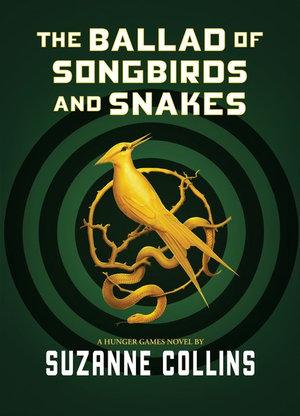Suzanne Collins, The Ballad of Songbirds and Snakes, Scholastic Australia, May 2020, 540 pp., RRP $29.99 (pbk), ISBN 9781743836811
“Ambition will fuel him. Competition will drive him. But power has its price.”
The Ballad of Songbirds and Snakes rewinds sixty-four years to the tenth annual Hunger Games. Ten years previous, rebels attacked the Capitol, killing many and causing mass starvation and destruction. When the rebels were defeated, the Treaty of Treason laid out the Hunger Games as ‘a war reparation — young district lives taken for the young Capitol lives that had been lost: the price of the rebels’ treachery’.
An eighteen year old Coriolanus Snow is in his final year at The Academy. He is an ambitious and vain young man, with an over-inflated sense of entitlement, extremely bitter over the loss of his family’s status, influence and wealth as a result of the civil war.
This book provides a background to how the Hunger Games were expanded from a simple blood-bath in an arena, not unlike the battles held in the colosseum in Rome, to the sophisticated televised games with which we are familiar. It highlights the attitudes held by citizens of the Capitol that made it possible to allow such brutality. Those who live in the districts are seen as second-class citizens, ‘human, but bestial; smart, perhaps, but not evolved. Part of a shapeless mass of unfortunate, barbaric creatures’.
When Snow is selected to mentor a girl from District 12, Lucy Gray, he sees an opportunity to advance himself and better the position of his family. With Snow, it’s all about ‘me, me, me’. Even as he sees himself falling in love with Lucy Gray, his prime motivation is to improve his future prospects. He ultimately discovers that he ‘didn’t like love, the way it made him feel stupid and vulnerable.’
In an interview, Collins reveals that she uses Panem to explore just war theory. The just war theory attempts to reconcile three things: taking human life is seriously wrong; states have a duty to defend their citizens, and defend justice, and protecting innocent human life and defending important moral values sometimes requires willingness to use force and violence. (1) There are many discussions and arguments in The Ballad illustrating the tensions created by attempting to reconcile these issues. As an adult reader, I found these discussions intriguing; I’m not sure that a young adult audience will be so engaged, particularly when they are expecting more action, less talk!
Collins also examines the state of nature debate of the Enlightenment period. The state of nature is the hypothetical life of people before societies came into existence. (2) Dr. Gaul argues that humans are basically animals, who are willing to kill to survive, and the hunger games illustrates this perfectly. Lucy Gray argues that ‘people aren’t so bad, really. It’s what the world does to them’.
I enjoyed Collins’ use of irony and whimsy in the creation of many characters’ names. Here are a few of my favourites: Casca Highbottom, Clemensia Dovecote, Fabrica Whatnot, Crispus Demigloss, Hilarius Heavensbee and Domtia Whimsiwick.
It’s ten years since the publication of Mockingjay, the final instalment in the original Hunger Games trilogy. Fans will be very excited by another instalment, but I wonder how many of them will be satisfied by this book. It’s overly long at five hundred plus pages and doesn’t have nearly as much action as the original trilogy. Although Lucy Gray is an appealing hero, she is not the main character in this book, and Coriolanus Snow lacks Katniss’s charm and likability. It’s hard to feel empathy for a character who will ultimately become the nemesis to our beloved Katniss.
Reviewed by Gaby Meares


